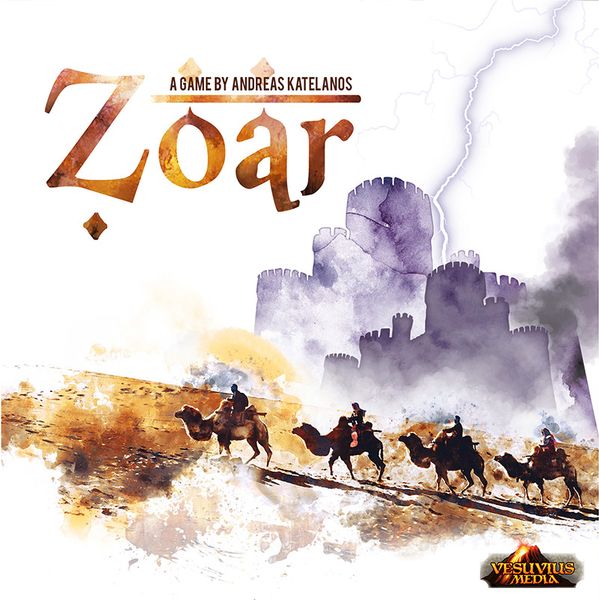Zoar (2018) Board Game
Zoar is a board game that was released in in 2018. It is designed by Luís Brueh and Shaun Ellis, with artwork by Vesuvius Media. The game falls under the categories of Ancient, Bluffing, City Building, Fighting, and Territory Building. It involves area majority/influence, area movement, grid movement, pick-up and deliver, and variable player powers as its main mechanisms.
Game Components of Zoar
How To Setup Zoar
To set up Zoar, first separate the four capital tiles and shuffle the rest of the tiles. Randomly set up the tiles to form a 4×4 gaming area, leaving each corner for the capital tiles. Place the ancient relics of each tribe diagonally opposite their capital city. Put one resource cube on the corresponding resource area on the tiles. Each player takes a player board, tokens in their color, and places their leader on the capital area. Distribute 1 metal and 1 food cube to each player.
Gameplay Mechanics and Game Objective
The objective is to guide your tribe across the desert, building cities and armies while defending against other tribes and collecting ancient relics.
Player Experience
Playing Zoar feels like a more military version of Catan, with modular boards and mobile units. The game requires planning ahead and predicting other players’ moves. The resource management system adds depth, as resources are not readily available in the same round they are collected. The game has a fast pace but requires careful resource management.
Pros
Cons
Personal Thoughts on Zoar
Zoar is ideal for fans of euro games and strategy enthusiasts who enjoy games with depth and complexity. It is best suited for players who appreciate area control, resource management, and variable player powers. However, the intense randomness from the divine intervention mechanic might not appeal to everyone, especially those who prefer more predictable gameplay. Overall, Zoar offers a rich and engaging experience for those who enjoy strategic planning and dynamic game environments.
We are supported by our audience. When you purchase through links on our site, we may earn an affiliate commission, at no extra cost for you. Learn more.

